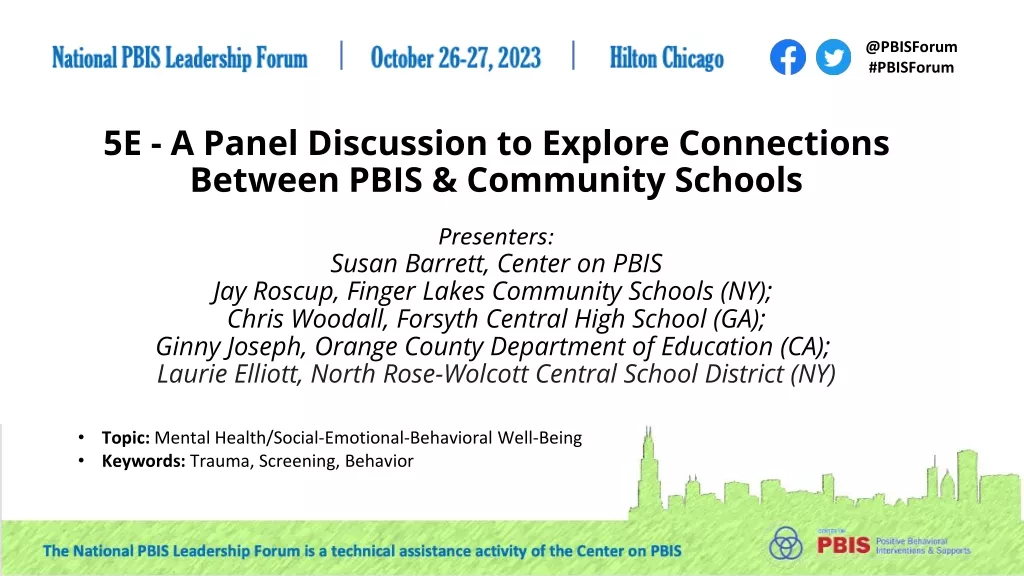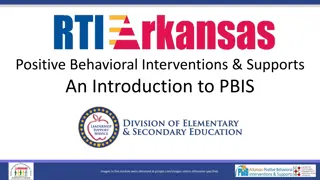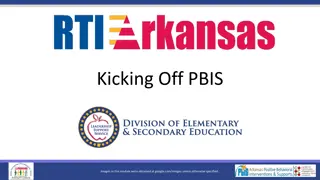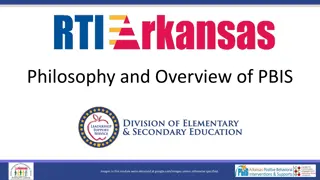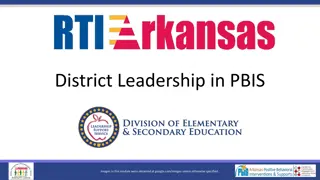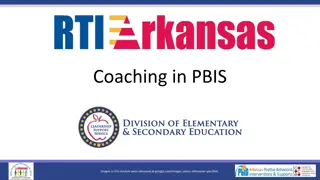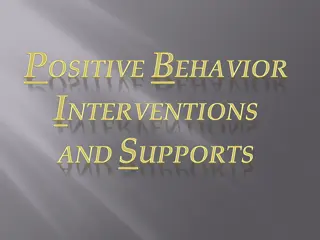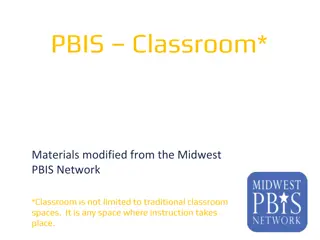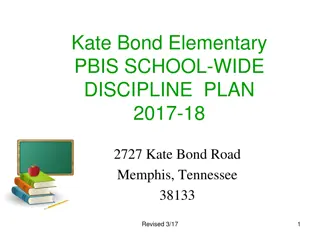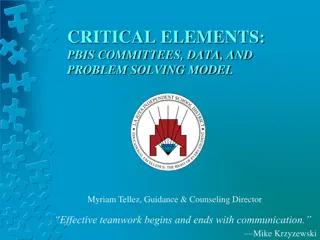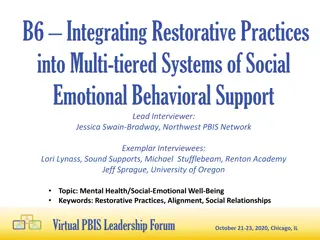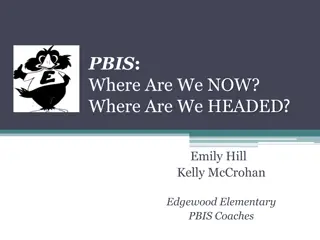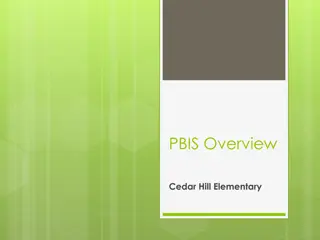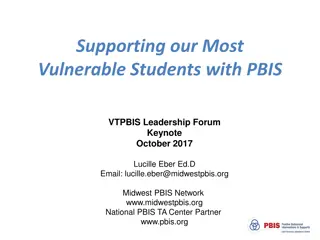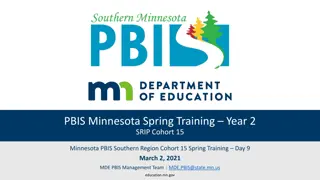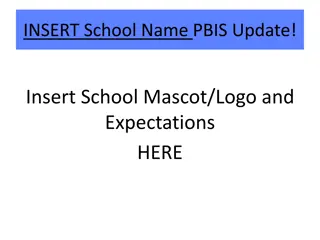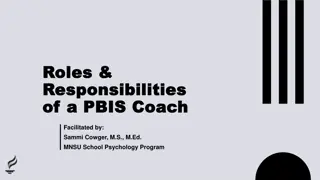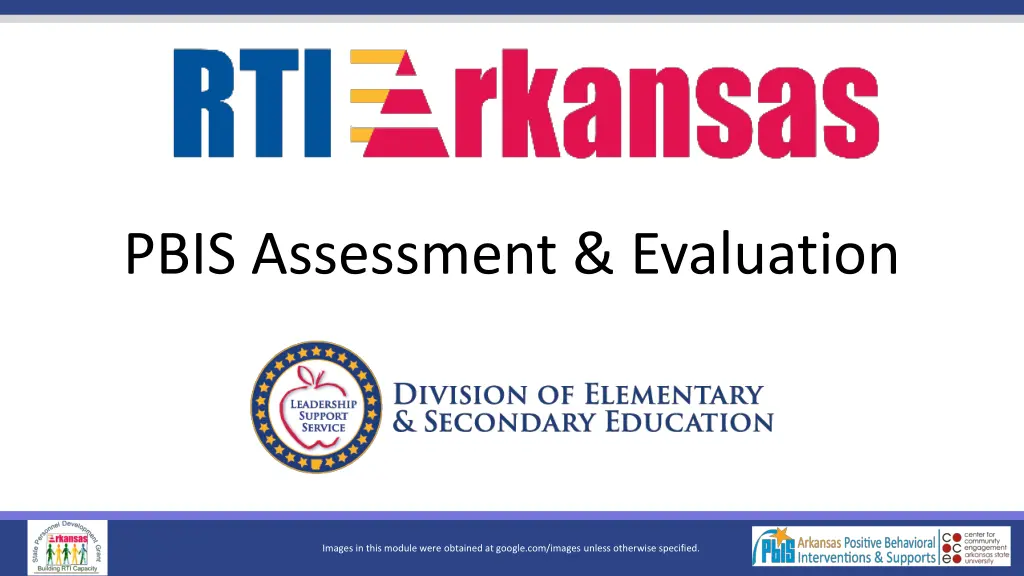
PBIS Assessment and Evaluation Strategies
Learn about the importance of assessment and evaluation in PBIS implementation, including tools and surveys used to measure fidelity, identify strengths, and guide improvement efforts. Explore data sources and best practices for sustaining PBIS initiatives.
Download Presentation

Please find below an Image/Link to download the presentation.
The content on the website is provided AS IS for your information and personal use only. It may not be sold, licensed, or shared on other websites without obtaining consent from the author. If you encounter any issues during the download, it is possible that the publisher has removed the file from their server.
You are allowed to download the files provided on this website for personal or commercial use, subject to the condition that they are used lawfully. All files are the property of their respective owners.
The content on the website is provided AS IS for your information and personal use only. It may not be sold, licensed, or shared on other websites without obtaining consent from the author.
E N D
Presentation Transcript
PBIS Assessment & Evaluation Images in this module were obtained at google.com/images unless otherwise specified.
Context For The Team Why do assessment/evaluation? Data sources Evaluation tools Planning Sharing outcomes
Why Evaluate PBIS Implementation? Ensure accuracy and consistency in implementation. Identify strengths and weaknesses in implementation.
Evaluating PBIS Fidelity of implementation of core elements Outcomes behavior, academics, school climate, etc.
Some Data Sources School-wide academic data School-wide discipline data Attendance data Special education data PBIS assessments Climate surveys Needs surveys Incentive surveys Involvement surveys
PBIS Assessments Tiered Fidelity Index (TFI) Self-Assessment Survey (SAS) Team Implementation Checklist (TIC) Benchmarks of Quality (BoQ) School Safety Survey (SSS) www.pbisapps.org
The Tiered Fidelity Inventory (TFI) Single, efficient, valid, reliable survey Measures application of core features of PBIS (three tiers) Completed by small team (administrator, coach, others) Includes a walkthrough tool
Uses Of The TFI Determine what is in place & what is needed Guide implementation efforts Assess progress Build action plan Self-assess annually to sustain implementation of PBIS
When To Administer The TFI? During initial implementation administer every three or four meetings. Once 70% is met three times in a row, administer annually. 1 1
TFI Categories Section for each tier Sub-divided into: teams, implementation, evaluation Individual items in each area above Walkthrough tool
Action Planning With The TFI Identify area(s) of need. Identify individual items to address. Develop actions and timeline; assign personnel.
Person(s) Responsible Subscale Item Current Score Action(s) Timeline 1.1 Team Composition Teams 1.2 Team Operating Procedures 1.3 Behavioral Expectations 1.4 Teaching Expectations 1.5 Problem Behavior Definitions 1.6 Discipline Policies Implementation 1.7 Professional Development 1.8 Classroom Procedures 1.9 Feedback and Acknowledgment 1.10 Faculty Involvement 1.11 Student/Family/Community Involvement 1.12 Discipline Data Evaluation 1.13 Data-based Decision Making 1.14 Fidelity Data 1.15 Annual Evaluation
Action Plan (Based on what source?) What needs to be done Who will do what When completed 1. Train all staff to work collaboratively and respectfully with families. (Family Survey questions 9, 10, 13) Create a monthly newsletter to keep parents informed of PBIS/RTI data/events. Include volunteer portion for parents to be involved. Tier I team will create a sub-team dedicated to communicating with staff and parents. September 2017 2. Assess parents opinions of how well schools communicate with them. (Family Survey) Continue using Survey Monkey Parent Survey in 1st and 3rd quarters. Tier I sub-committee will review results of surveys. Fall and spring 2017/2018 3. Share school-wide expectations, t-chart, school matrix, strategies for acknowledging, and the acknowledgement system. (Family Survey questions 4 & 15) Expand current brochure given out at beginning of the year to include more info on PBIS/RTI and the benefits of implementing them. Tier I sub-committee will make changes to brochure and to displays that will be posted at open house. Summer 2017 ready to use at open house night.
Self-Assessment Survey (SAS) Staff perception/priorities School-wide, classroom, non-classroom and individual student systems Identifies staff priorities Annual
Team Implementation Checklist (TIC) Team completes Tier I implementation Done every three or four months
Benchmarks Of Quality (BoQ) Team members & coach give input Identifies Tier I strengths & needs Completed once per year
School Safety Survey (SSS) Determines risk and protective factors Determines training and support needs Tracked over time
Other Assessments Surveys to determine direction and actions needed (e.g., climate surveys & parent engagement surveys) Surveys to determine how well students, parents, and the community understand PBIS
Plan For Evaluation (Example) Measure/Tool Year One Year Two Year Three Fall Winter Spring Fall Winter Spring Fall Winter Spring TFI Sept April/May April/May April/May SAS Oct Oct Oct TIC Jan Parent Survey Aug Aug Aug Climate Survey for students Sept April April April Teacher survey Feb Feb Feb SSS Dec
Share Your Results Share with staff & district coach Annual update to school board Newsletters Info on website Local media
Lets Practice! Tiered Fidelity Inventory (TFI) Section 1.14 Fidelity Data Section 1.15 Annual Evaluation
1.14 Fidelity Data Subscale: Evaluation Scoring Criteria 0 = Not implemented 1 = Partially implemented 2 = Fully implemented 0 = No Tier I SWPBIS fidelity data collected. Feature Data Sources School policy Staff handbook School newsletters School website 1.14 Fidelity Data: Tier I team reviews and uses SWPBIS fidelity (e.g., SET, BoQ, TIC, SAS, Tiered Fidelity Inventory) data at least annually. 1 = Tier I fidelity collected informally and/or less often than annually. 2 = Tier I fidelity data collected and used for decision making annually. Main Idea: Measuring fidelity is essential for maintaining high-criterion use of PBIS. Any Tier I fidelity measure is acceptable. Completing this inventory meets the criterion for a 2 score.
1.15 Annual Evaluation Subscale: Evaluation Scoring Criteria 0 = Not implemented 1 = Partially implemented 2 = Fully implemented 0 = No evaluation takes place, or evaluation occurs without data. Feature Data Sources 1.15 Annual Evaluation: Tier I team documents fidelity and effectiveness (including on academic outcomes) of Tier I practices at least annually (including year-by-year comparisons) that are shared with stakeholders (staff, families, community, district) in a usable format. Staff, student, and family surveys Tier I handbook Fidelity tools School policy Student outcomes District reports School newsletters 1 = Evaluation conducted, but not annually, or outcomes are not used to shape the Tier I process and/or not shared with stakeholders. 2 = Evaluation conducted at least annually, and outcomes (including academics) shared with stakeholders, with clear alterations in process based on evaluation. Main Idea: Implementation of the core components of PBIS is more likely if the Tier I team both self-assesses implementation status at least annually AND reports their status to relevant stakeholders (i.e., school community, school board, etc.)
Summary Conduct regular assessments and surveys. Monitor fidelity of implementation. Assess satisfaction and buy-in. Do evaluations regularly (at least annually). See the big picture. Report to stakeholders.
Resources https://www.pbisapps.org/Applications/Pages/PBIS-Assessment.aspx PBIS Apps - Assessment Overview http://www.pbis.org/evaluation/evaluation-tools PBIS Technical Assistance Center info on evaluation tools

